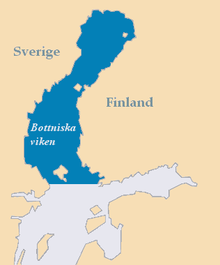Stockholm during the Swedish Empire
As a leading European power, a role which the country was to impose itself following the Thirty Years' War (1618–1648), required the capital to be refurnished with a worthy architectonic rob—the nation was determined never to repeat the embarrassment experienced following the death of Gustavus II Adolphus (1594–1632) when the city, still medieval in character, caused hesitation on whether to invite foreign statesmen for fear the lamentable appearance might undermine the nation's authority.
[2] To this end, a reform in 1636 replaced the medieval city council with four committees (kollegier), each having a magistrate (borgmästare) and three aldermen (rådmän), responsible for justice, trade, administration, and construction respectively.
Because the management of the city had been a spare time occupation beside regular business activities, appointment to the council had previously been based on experience of commerce.
This problem was solved in 1635 when Norrmalm was reunified with Stockholm, probably a necessary step for the planned regulations and another indication the entire development was dependent of the government and not the city itself.
No surviving documents tells who made what decision, but certain is the government wanted to see a major face lift, and in a letter related to the fire the following year, the king mentions plans ordered by himself (afritningh och scampelun, vi nådigst hafve göra låtidt).
A city plan for the district, most likely developed by Anders Torstensson in early 1637, feature several still preserved structures, including Stoore Konnungz gatun ("Large King's Street", today's Drottninggatan) and Mönstre Platz ("??
One of the problems he failed to deal with was the huge ridge Brunkebergsåsen separating the two parts of Norrmalm, and misfits between the non-aligned streets on either side can be seen on modern maps of the city.
A map from the early 1640s, presenting the ambitious plans for the northern suburbs, still renders a spontaneous conglomeration of meandering streets converging on the southern city gate, but with proposed artery roads dashed.
The outline of a main street stretching north to south across the island (corresponding to today's Götgatan) already existed, and is proposed to be straightened out on the map.
It was one of the best natural harbours of the era and throughout the 17th century countless foreign visitors marvelled at the sight of large ships "with 60 or 70 canons" moored along the eastern quay next to the royal castle.
Half of these items, mostly fishery products, were delivered from the Baltic, and corn came from the Lake Mälaren region, occasionally exported out of the city with a peak of 100,000 barrels in 1648.
During the later half of the century, the rapidly growing capital could not be supported by the Lake Mälaren region alone and therefore became dependent of corn imported from the Swedish Baltic provinces.
[9] What made Stockholm an important trade city on the Baltic Sea, was undoubtedly the transit of goods from Sweden to continental Europe.
During the 16th century, Sweden had played a passive rôle in international trade; German merchants and ships managed the export of Swedish primary products such as osmond iron, raw copper, and butter.
This export was largely regarded as a means of securing the import of items not available in Sweden, such as salt, wine, and luxury goods demanded by the court.
[9] With the introduction of a mercantile doctrine around 1620 trade became a keystone to governmental income and the Swedish economy subsequently focused on export, not of raw materials but of refined products.
During the first part of that period, however, annual production was limited to 3–4 thousand tonnes, which, recalculated into bar iron, roughly equivalent to the capacity of a single modern cargo ship.



Engraving from Eric Dahlberg's Suecia Antiqua et Hodierna around 1690.

